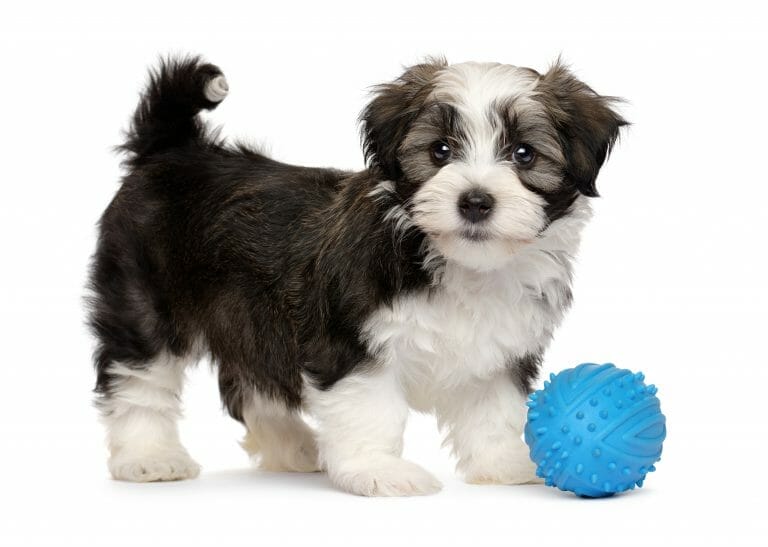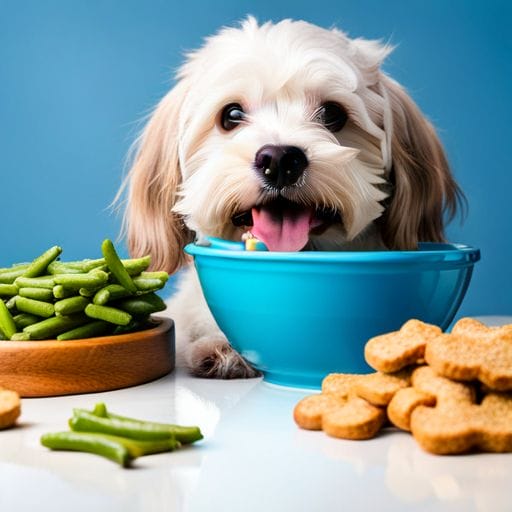The Different Coat Colors of Havanese Puppies
Although there are also brindles and reds, the most common colors of Havanese coat are black, white, mahogany, apricot, cream and silver.
Havanese puppies come in a wide variety of colors and patterns, ranging from solid colors to various combinations. The most common colors are black, white, gold, and blue. The adult coat can reach a length of six to eight inches and often changes in color over time.
The American Kennel Club (AKC) only recognizes sixteen colors in the breed, but there are many other variations of colors and patterns that can occur. Examples of bi-color variations include mocha (chocolate white), cream and tan, and black and tan. Sable and parti-color varieties are also possible in Havanese puppies, with colors including sable, brindle, and merle. Rare color patterns such as chocolate tricolor and seal tricolor can also be found in the breed.
To fully understand the amazing color of this wonderful breed, keep in mind that most Havi puppies born with black coats start to lighten around 4-6 weeks of age.
Common Color Mixtures in Havanese Puppies
Havanese puppies come in a variety of colors, including gold, black, blue, white, red, sable and white and black and white. These variations are due to the interaction between the dog’s two genes, which determines the coat color. These combinations are created by the dilute gene, which results in the base color becoming lighter and more pastel in appearance. The silvering gene, on the other hand, results in a silvery sheen over the coat. This combination of the two genes creates beautiful bi-color variations that are highly sought after. While these bi-color variations can be found in both adult and puppy Havanese, they are more common in puppy Havanese. If you’re looking for a Havaneses with striking bi-color markings, then it’s best to look for young Havaneses puppies rather than older dogs.
The breed standard also allows for sable and parti-color varieties in Havanese puppies. These mixtures of white, cream and gold can produce some stunning combinations that make these dogs stand out in a crowd.
Colors of the Havanese: Before and After – As they Mature
The Havanese has hair that changes colors as they grow up, making them an interesting breed. Most of the time an adult Havanese would have the same colors as puppies. Sometimes the color change in their is so dramatic that it’s hard to tell if they’re the same dog.

TYPICAL HAVANESE COLORS
White Havanese

The true white Havanese (CKC#438) is completely white and is devoid of any colouration. There is nothing but white on it. Lips, nose and eyerims are black. Dogs with darker ears appear white but are likely either light champagne or champagne and white.
Cream Havanese

Various shades of cream can be found on Havanese dogs. In some cases, the cream appears almost tan-like. In others, it resembles a pale shade of creamy yellow.
Champagne Havanese
Champagne (CKC#131) comes in light cream, cream, blond, buff, and beige colors. Throughout the coat, there may be variations in shading. Generally, the dogs are darker on the dorsal side of their bodies (head, ears, neck, and back) and lighter on the ventral side of their bodies (chests, bellies, legs). The eyerims, lips, and nose are black.
Gold Havanese (CKC#202)
Golden color ranging from honey to pale apricot to sandy gold to toffee. However, the dog’s coat may differ in shades throughout. Dogs commonly have darker shadings on the dorsal parts of the body (head, neck, back), and lighter shading on the ventral parts of the body (chest, belly, limbs). Eyerims, lips, and noses are black as well.
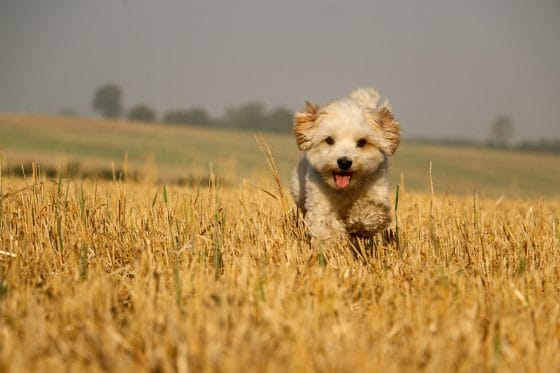
Please check out our other post about Havanese colors.
Sable Havanese
Sable coats are characterized by a base color of black or brown, with the tips of the hairs being a lighter color such as cream or white.
When they are adults, sable Havanese puppies usually have much lighter colored hair. These genes modify themselves in just this way. Sometimes, all that remains of the dark, sable part is the tail and part of the ears once the pups have grown into adults. Typically, a puppy sable Havanese looks very different from an adult one.
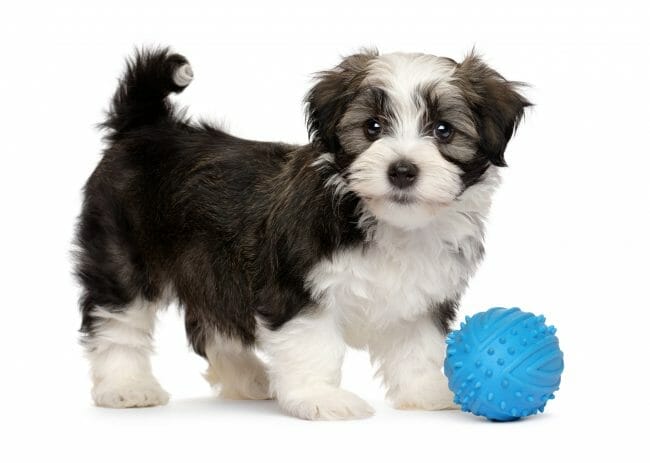
Brindle Havanese (CKC#105)
A brindle pattern includes stripes, streaks, or spots of a dark color (black, silver, or brown) on a lighter base colour (cream, gold, red). A brindle dog may have white feet and blazes or a white trim. Generally speaking, the stripes vary greatly, ranging from sooty-edged stripes so thick the light colour hardly peeks through to a clear creamy color with gentle shadowing. These markings may be reminiscent of those found on Boxers or Great Danes.

Chocolate Havanese (CKC#133)
You will be able to tell a chocolate dog by her solid chocolate coat. Depending on the chocolate, the brown shade can vary from light to medium, as with milk chocolate, to dark, as with dark baker’s chocolate. There are no black eyerims, lips, or noses of chocolate dogs as they have self-colored pigments in liver/brown instead. Chocolate dogs don’t have any black on them at all.
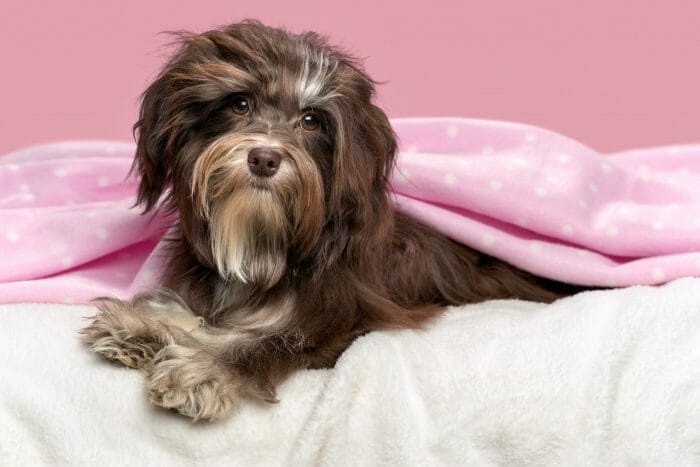
Silver Havanese pups (CKC #376)
Silver Havanese are born black and start to lighten around 4 to 6 weeks of age. Silver is usually evident at the root of the coat and in the face and head. Dogs’ coats will lighten as they mature to different shades of silver, ranging from pale platinum, sterling, and pewter to deep grey. When a puppy has reached the age of 12 to 15 months, its coat will have completely changed.
Brown and White Havanese

Frequently Asked Questions
When Does Havanese Begin to Change Color?
It is very hard to predict when the color changes will occur due to the modifying genes, as explained in an earlier section. It is usually only a few weeks after they are born that Havanese begin to change color.
What does CKC Stand for?
The Continental Kennel Club (“CKC”) is a commercial registry for dogs and breeders but without the strict formalities of the AKC. Its rules and registration are more lenient and its standards are more relaxed.
Continental Kennel Club | CKC Dog Registration
Table of Havanese Colors
| Color | Description |
|---|---|
| Black | Solid black coat |
| Blue | Solid blue coat |
| Chocolate | Solid chocolate coat |
| Brindle | A coat with streaks of two or more colors, typically brown or black |
| Sable | A coat with a base color of brown or black, with lighter streaks or tips |
| Red | A solid red coat |
| Gold | A solid gold coat |
| Champagne | A light cream-colored coat |
| Cream | A solid cream-colored coat |
| White | A solid white coat |
| Parti-color | A coat with two or more colors, typically with white as the dominant color |
| Irish pied | A coat with two or more colors, typically with white as the dominant color and the other colors being patches or spots |
| Parti belton | A coat with two or more colors, typically with white as the dominant color and the other colors being flecks or streaks |
When Does the Color Change Stop?
Your Havanese’s coat will no longer change color before they turn three, on average. However, you can never know for certain.
Factors That Affect Color Variations in Havanese Puppies
When it comes to the color of Havanese puppies, there are several factors that can affect the color variations. The most common factor is genetics. Havanese puppies can inherit different coat colors from their parents. For example, a black-coated Havanese puppy may have both a black-coated and a brown-coated parent. Another factor that can affect coat color is environment. Exposure to sunlight or other environmental factors can cause a Havanese puppy’s coat to lighten or darken in color. Finally, age can also be a factor in determining the color of a Havanese puppy. As a puppy grows older, its coat will often become darker in color as it matures.
Additional Resources:
Havanese Dog Breed Information
27 Amazing Colors And Patterns Of A Havanese – TheGoodyPet
Havanese Color Guide | Royal Flush Havanese
===
Recommended Reading
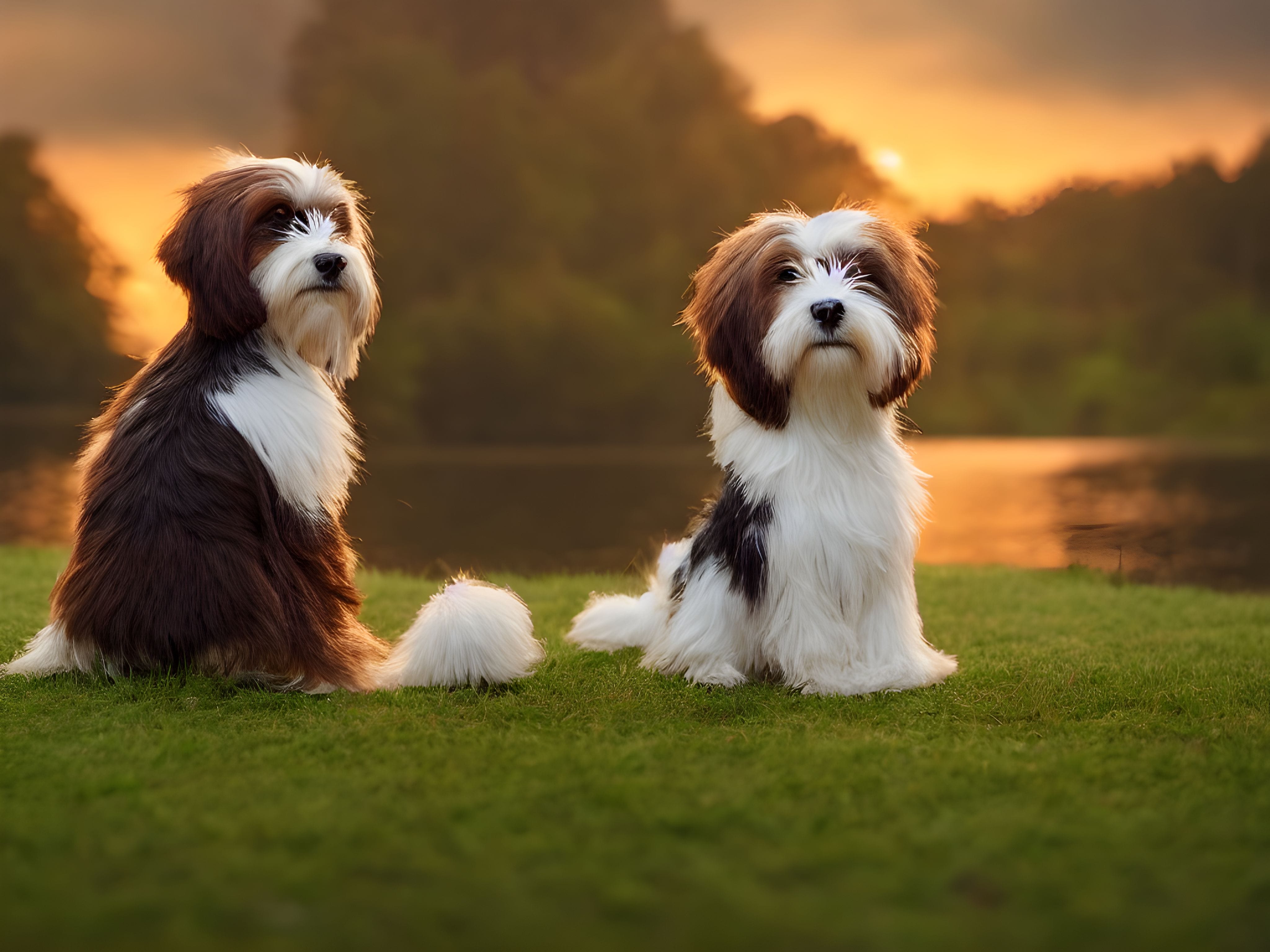
[rank_math_html_sitemap]
- About the Author
- Latest Posts

Sara is a passionate writer and an avid lover of Havanese dogs. With several years of experience in dog training, breeding, and care, she has developed a deep understanding and admiration for the Havanese breed. Sara’s mission is to provide valuable insights, resources, and tips to help Havanese dog owners provide the best possible care and nurturing for their beloved pets.

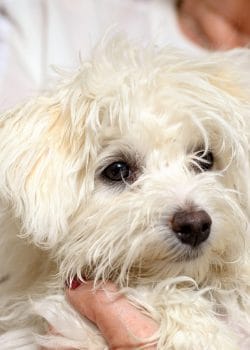


![Havanese Yorkie Mix [Questions Answered] Havanese Yorkie Mix [Questions Answered]](https://eetdf47kugs.exactdn.com/wp-content/uploads/2023/03/Havanese-and-Yorkie-768x402.jpeg?strip=all&lossy=1&ssl=1)
